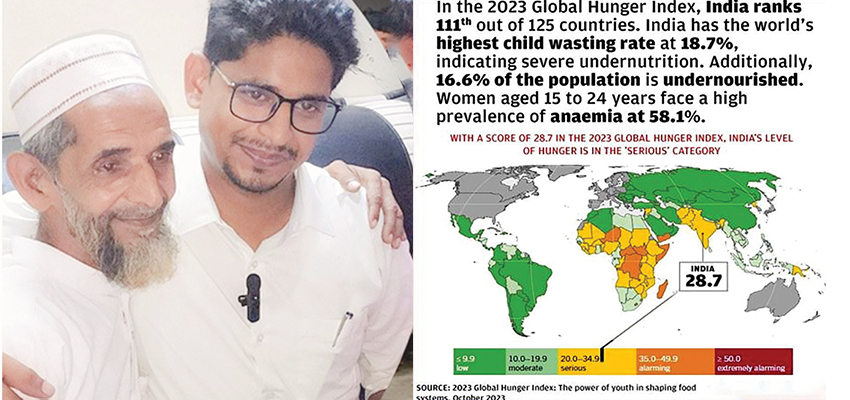
Corporate Citizen claps for the determination and grit of a former street vendor from Uttar Pradesh who cracked the UP Provincial Civil Service-Judicial (PCS-J) examination to become a Civil Judge.
The son of a Haleem-seller, Mohammad Kasim was born into a very poor family of Ruknuddin Sarai in the Sambhal district of northwestern Uttar Pradesh. He secured 135th rank in the PCS-J exam and is one of the six students from the Aligarh Muslim University (AMU) to have cracked the Uttar Pradesh Judicial Service Civil Judge (Junior Division) Examination 2022, under the Uttar Pradesh Public Service Commission (UPPSC), and results were declared recently in 2023. As he embarks on his legal journey, his hard work and perseverance, transcends his socio-economic challenges, testifying the transformative power of education.
Not long ago, the 29-year-old Kasim, washed dirty plates while working with his father during his primary school days. As he grew older, he mastered the art of making Haleem (a savoury porridge made with meat, wheat, lentils, and spices) and Biryani from his father, and eventually set up his stall (2007-2012). His economically disadvantaged background however never put his dreams on hold. His mother has motivated and prevented him from dropping out of school, as he continued to juggle his education and earnings, as a roadside vendor. His perseverance is reflected in his academic journey. Despite failing once in the tenth grade, he continued his schooling in his village and later at the Warsi Junior High School of Ruknuddin Sarai. He then joined the Aligarh Muslim University for higher education, pursuing Law (BA LLB). He gained inspiration from his seniors in the Law department, and his teachers, encouraging him to pursue LLM. He topped the LLM examination in 2019, under Delhi University, securing an All India Rank 1, and subsequently qualified for the 2021UGC NET. “Nobody can fail you if you are determined and committed to what you have planned to achieve,” he said. In a discriminatory education system, Mohammad Kasim’s journey is an example of a family’s firm belief in their son’s potential. Their faith eventually built the boy’s confidence in accomplishing an almost impossible feat from a lad residing in an almost neglected district of Uttar Pradesh.
Corporate Citizens slaps the constant contemplations over India’s hunger score, ranked slightly above other smaller economies.
India is among one of the fastest growing economies worldwide, yet facing hunger worries, according to two NGOs, ‘Concern Worldwide’ and ‘Welthungerhilfe’, from Ireland and Germany, respectively. The agencies have computed a peer-reviewed report, prepared annually from 2006. The Global Hunger Index (GHI) report, published on 12th October, 2023, ranks India at 111th position among 125 countries, slipping four rungs lower than the previous year. The report makers have rejected the Indian government’s objections that question the methodology for computing the parameters. The publishers have considered four factors for calculating the GHI scores, which include undernourishment across the entire population, children and adults, child stunting (share of children who have low height for their age), mortality of children under-5 years, and child wasting (children who have low weight for their height). The Indian government has raised concerns about these four parameters, saying that, “Three out of the four indicators used for calculation of the index are related to the health of children and cannot be representative of the entire population. “The fourth and most important indicator, ‘Proportion of Undernourished (PoU) population’ is based on an opinion poll conducted on a very small sample size of 3000,” the government claimed. The report explains that India has the highest child ‘wasting’ (low weight for height) rate worldwide and at 18.7%, it reflects acute undernutrition. Miriam Wiemers, senior policy advisor at Welthungerhilfe, said, “The latest household consumption survey data that India has released were collected way back in 2011.” “When governments do not provide recent consumption survey data, changes in the distribution of calorie intake in the population are estimated using the Food Insecurity Experience Scale (FIES) survey data.” As the debate continues, a NITI Aayog report published in July 2023, shows 13.5 crore in India escaped poverty, but were challenged due to nutritional lapses, wherein 74.1 % of the population could not afford healthy food. It translates to 100 crore people in India, consuming food with deficient nutrition. As the debate rages on, with checks and corrections discussed on paper, it commands a reality-check, that would reduce hunger pangs and drive a ‘better’ real-time Hunger Index.